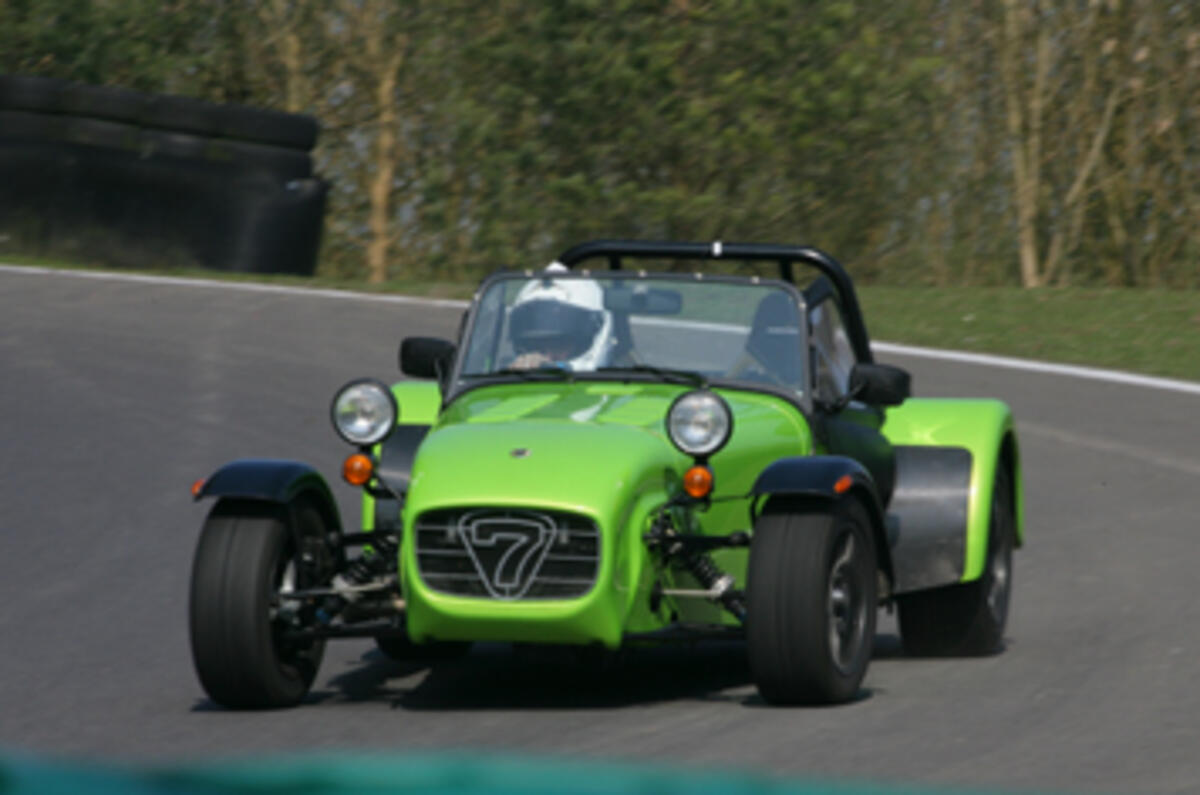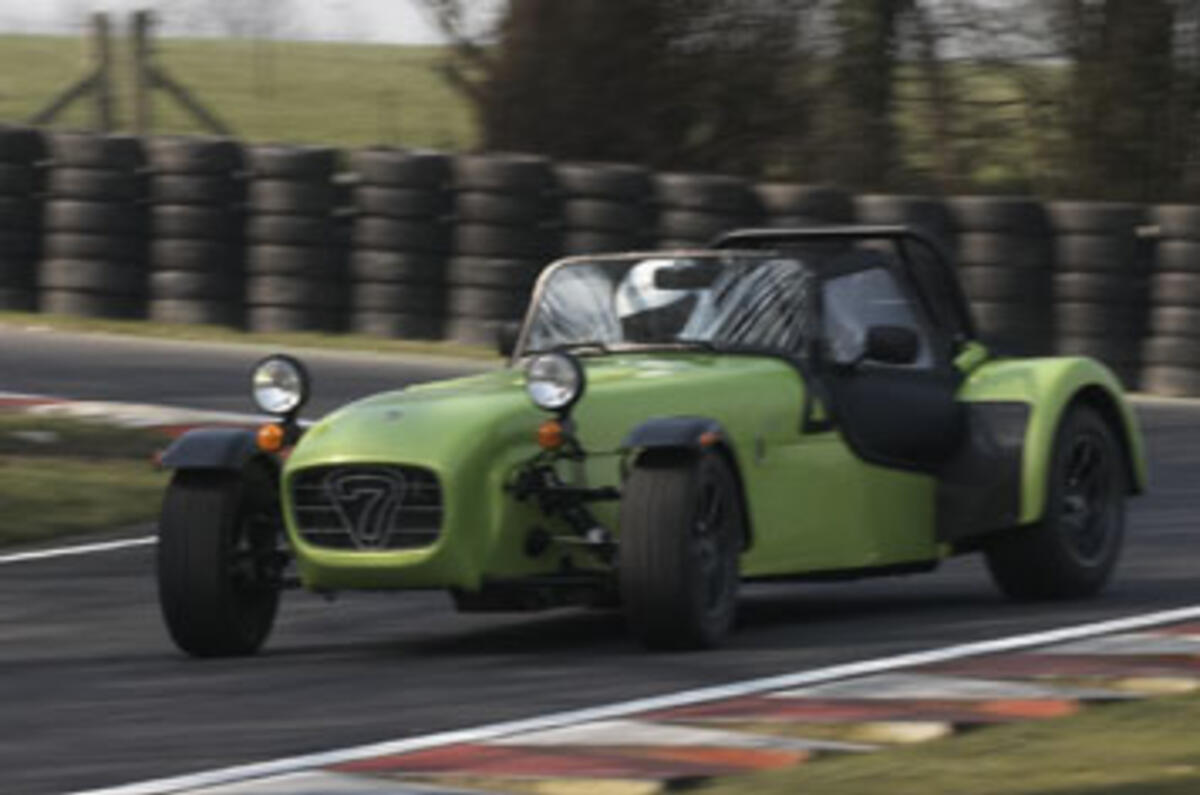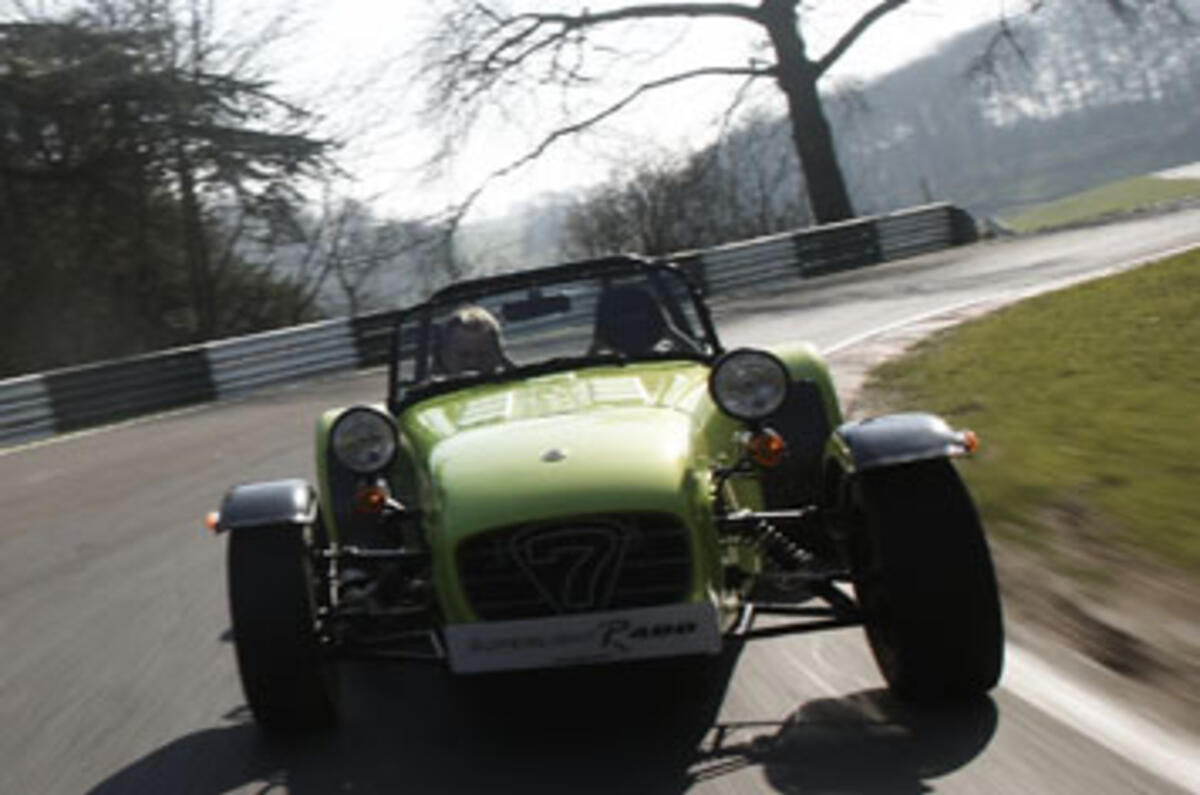What is it?
It's not a CSR (that's a temporary glitch in our website data); it's the new Ford Duratec-engined Caterham R400. Gone is the fragile old 1.8-litre K-series engine, and in its place comes in a new 2.0-litre unit, fettled by Caterham.
The old 1.8-litre K-series might have revved highly and produced plenty of power, but it needed a £3000 rebuild every 5000 miles.
Not so the new Ford Duratec engine fitted to the new R400. Here is an engine that produces around 212bhp and a K-series-beating 152lb ft of torque. And yet all Caterham has done to this Mondeo motor is make it breathe rather better, fitted some spikier cams and used its own ECU.
This motor is also lighter than the old one, and lighter on your wallet, too. Brand new and modified by Caterham, it costs less than £2500 new.
The engine’s not the only change: a new robot-welded chassis has increased rigidity by 12 per cent, new Bilstein dampers and a completely new set-up have given a far better balance between road and track handling. And the whole thing is now cheaper than before, with a fully built car costing £28,495 (but while a limited-slip diff is now standard, a dry-sump is now an option).
What’s it like?
For all its new engine, as the Seven enters its 50th year of production, this latest version at first seems saddled by a worrying air of so-what-ness. It looks the same, has the same name, the same wheels and a similar power output.
On first aquaintance, it’s an R400 with a Ford motor, so I do not understand why Caterham boss Ansar Ali is wearing a perma-grin as we head off onto Cadwell Park. Ten laps later, the grin is more than explainable. This is a wonderful car: less capable than the CSR and its clever independent rear suspension, but in many ways more enjoyable.
Torque has never been an important term in Caterham-speak, but get used to it, because the R400 has a sensational mid-range. It pulls from virtually nothing and then feels supercar-fast from 3000rpm. The shove keeps building up until around 7000rpm, and you can hang it out to 7800rpm if needed, but there’s little point.
This thumper is now perched in a quite brilliant chassis. I can’t say I felt the extra rigidity through reduced body flex, but it has certainly facilitated a fine new suspension set-up. The R400 uses a new Bilstein damper and the same Avon R500 tyre, both of which work very well.
The added torque really helps the chassis too. The old K-series used to operate on power alone, and this gave the front axle time to generate understeer as it waited for the bang to arrive. The Duratec’s instant torque now works through a standard limited-slip diff, allowing you to either enjoy just how neutral it is through most corners, or prod a little harder and create some neat, controllable oversteer.
By rights, any Caterham that works on a track shouldn’t work on the road. But the R400 does. Ride comfort is very good, there’s plenty of wheel travel and there’s a noticeable lack of the bump-steer that usually afflicts Caterhams. It isn’t an Elise, but it’s as supple as I can imagine a De Dion-axled Seven ever being.
Should I buy one?
Every car range has its sweet spot, and there’s no doubt that the new R400 is the product that best displays what Caterham can still do with this 50-year-old design.












Add your comment